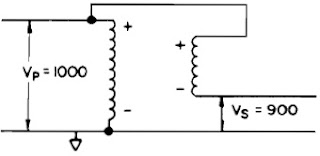Uninterruptible Power Supply (UPS) is a power quality device, which provides continuous and conditioned power to a critical load. Also, the device averts power quality problems coming from the distribution system such as interruptions, voltage sags, swells, harmonics and noise from disrupting the performance of sensitive electronic components and other electrical equipment. In other words, a UPS provides protection against all types of interruption and, as a bonus, can also isolate the critical load from other power quality problems that are present in the incoming supply.
Moreover, the term uninterruptible power supply has been applied both to an uninterruptible power system and to the specific battery-inverter equipment. In this post, the term describes the specific equipment unless otherwise mentioned.
 |
| Uninterruptible Power Supply (UPS) |
Applications and Operation
The uninterruptible power supply is widely used to maintain the safety and business critical systems located in computer rooms, process control stations, data centers, server areas and online processing (i.e. email, online banking and mobile phones). Therefore, end-users - especially commercial and industrial, are now able to fully maximize the availability of their systems and equipment and have the following benefits:
Ø Computer jobs are not abruptly halted due to voltage sags and interruptions.
Ø End-users are not hassled by computers and other devices shutting down.
Ø Equipment does not incur the stress of another (hard) power cycle.
Ø Avoid unnecessary critical data loss.
In addition, the uninterruptible power supply can be operated in parallel to provide added security of electrical power supply to the equipment connected to them. This is known as operating in “redundant configuration”, which means that if one module fails or is removed for maintenance, the other connected modules can support the critical load.
Uninterruptible Power Supply - Categories and Technologies
Uninterruptible Power Supplies can be categorized into two main sub-technologies:
1. Static UPS
2. Rotary UPS
Static Uninterruptible Power Supply (UPS)
Static Uninterruptible Power Supplies are designed and best suited for linear and constant loads. A static UPS, as the name suggest, has no moving parts unlike its rotary counterpart. It usually consists of three major components:
1. Converter or rectifier
Converts the AC power into DC in order to charge the battery and power the inverter.
2. An energy storage
Typically, this is a battery which stores DC electrical energy. The most common battery used by uninterruptible power supply manufacturers is the valve-regulated lead acid battery (VRLA). This is because the VRLA is self-contained, durable, relatively cheaper and environment-friendly.
3. Inverter
Other components of the static UPS include:
Ø Bypass or static switch (where required)
Ø Electronic control system, which controls the operation of the product.
Ø Power supply filter/s.
 |
| Static UPS Schematic Diagram |
1. Online UPS
Rotary Uninterruptible Power Supply (UPS)
The Rotary Uninterruptible Power Supply utilizes the inertia of a large, high-mass spinning flywheel to supply energy to the critical load in the event of interruptions. In addition, the flywheel serves as a barrier against voltage sags and surges. It is usually operated in conjunction with a motor-generator set, where the flywheel provides the back-up power only for the short period needed for the rotating systems to start up.
The rotary uninterruptible power supply is generally reserved for applications that require more than 100 kVA of protection (e.g. industrial applications). It is used where the system is large and the likelihood for short-circuits is high. This is because they are more durable and has the capability to handle such conditions better than the static uninterruptible power supply. In addition, a rotary UPS can handle non-linear and linear loads easily but are comparatively expensive.
 |
| Rotary Uninterruptible Power Supply Schematic Diagram |
However, in the end, it should be noted that the primary function of any uninterruptible power supply – whether static, rotary or the combination thereof, is to protect the power supply of electrical or electronic equipment when the power goes out. The electrical characteristics of the actual load being protected and external influences on the electrical system determine which technology is the best solution. Furthermore, other factors such as reliability, cost, and location/space should also be evaluated.
References:
Carbon Trust. (2010). Uninterruptible Power Supply. A guide to equipment eligible for Enhanced Capital Allowances.
Kusko, A. and Thompson, M. (2007). Power Quality in Electrical Systems. New York: McGraw-Hill.












